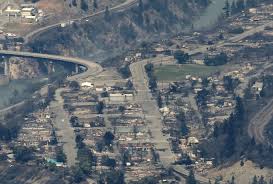
Introduction
Lytton, British Columbia, a small but resilient community, made headlines in 2021 due to a catastrophic wildfire that ravaged the area. The event not only destroyed homes and businesses but also symbolized the growing crisis of wildfires in Canada, exacerbated by climate change. Understanding Lytton’s recovery efforts is crucial as it highlights the broader implications for communities experiencing the wrath of natural disasters.
The Wildfire Incident
On June 30, 2021, Lytton hit a record high of 49.6°C, contributing to extreme fire conditions. The wildfire engulfed the village, forcing residents to evacuate and leading to the destruction of over 90% of structures. Tragically, the fire claimed two lives and left many displaced, prompting immediate humanitarian responses from various organizations, including the Canadian government and local agencies.
Community Efforts and Government Response
In the aftermath, residents came together, displaying remarkable solidarity and community spirit. The Canadian Red Cross and local charities provided vital support, offering temporary housing and essential supplies to those affected. In response to the disaster, the federal government allocated $33 million for recovery efforts, which has since focused on rebuilding infrastructure, providing mental health services, and supporting economic recovery.
Lytton’s recovery is not just about rebuilding homes; it involves a comprehensive approach to enhancing community resilience against future wildfires. Initiatives have been launched to implement improved fire safety regulations, reforestation projects, and education programs aimed at preparing residents for future crises.
Current Status and Ongoing Challenges
As of 2023, significant progress has been made in Lytton, with plans to rebuild the community set in motion. Temporary housing solutions have been established, and several community centers are in the works to support social cohesion. However, challenges remain, including securing funding for long-term recovery and ensuring that rebuilding efforts are sustainable and resilient to climate change.
Conclusion
Lytton BC’s journey illustrates the strength of community resilience in the face of adversity. As the village continues to recover, it serves as a critical case study for other communities at risk of wildfires and natural disasters. The ongoing support from both governmental and non-governmental organizations emphasizes the importance of collaboration in disaster recovery, making it a pertinent topic for anyone interested in environmental issues and community management. Lytton’s experience underscores the need for proactive strategies to prepare for and mitigate the impacts of climate change—lessons that are imperative for future resilience throughout Canada.

